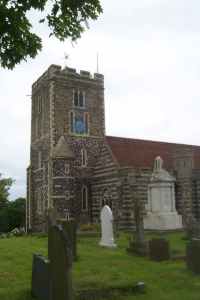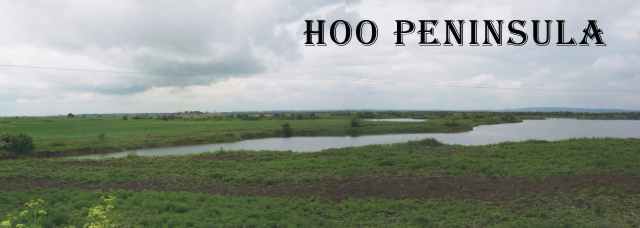All the resident
birds were present at the Cliffe Pools: Black-headed Gulls, Common Terns,
Oystercatchers, Greylag and Canada Geese, Robins, Chaffinches, with a few
Wood Pigeons and Collared Doves for variety. After we got lost on the peninsula,
while trying to find Northward Hill RSPB, we spotted our first pair of
Greenfinch in the churchyard of a marvellous old Norman Church.
A hand written sign on the door indicated that the church was started in
1100 "and something" and we could "get the key from the vicar". That
seemed rather intrusive, so we didn't....
...
Trying to find the road to the Northward
Hill RSPB ( for a detailed map of the area) had us touring nearly every street of High
Helstow. There was a definite preference to put the signs immediately across
from, or even in one case, after, the correct turn. Even at residential
speeds, we were usually past the turn as soon as we spotted the sign.
for a detailed map of the area) had us touring nearly every street of High
Helstow. There was a definite preference to put the signs immediately across
from, or even in one case, after, the correct turn. Even at residential
speeds, we were usually past the turn as soon as we spotted the sign. |
 |

.jpg)